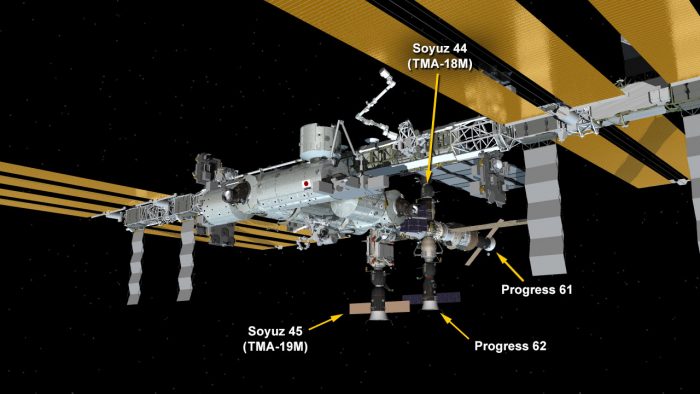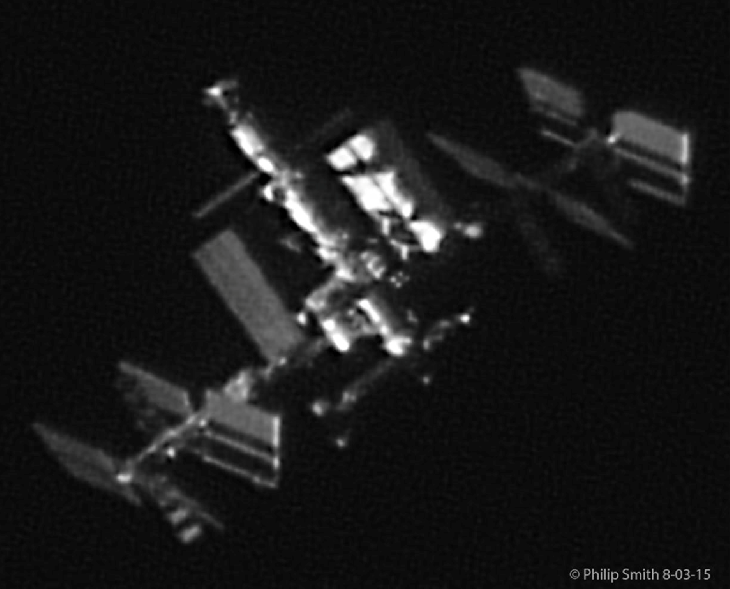
Launched November 20, 1998, the International Space Station (ISS) marked an historic achievement for humans in space when it completed 100,000 orbits around Earth on May 16, 2016. At that time, it traveled more than 2.6 billion miles (4 billion km), a distance equivalent nearly to that between Earth and Neptune or 10 round trips between Earth and Mars. To honor this unique feat of human ingenuity, here are seven things about ISS you might not know.
1. ISS’s original mission was to establish a living laboratory in space. NASA and the Russian Space Agency (RSA) worked cooperatively to establish the space station:
… with the extended intent of being a living laboratory and base for Low Earth Orbit experiments and missions to the moon, Mars, and asteroids.
Since its inception, the station has also played a key role in strengthening international partnerships and cooperation.
Here’s the original memorandum of agreement between NASA and the Russian Space Agency.


2. ISS began with just 2 modules, from U.S. and Russia. ISS was born in 1998, the United States space module Unity docked with a Russian module Zarya using a Canadian-built robotic arm on the space shuttle.
Eighteen years of intergovernmental negotiations and redesigns later, the ISS is now the most complex, large-scale engineering project ever created by a group of nations. Assembled in pieces over the course of a decade, it has seven U.S. modules (Unity, Destiny, Quest, Tranquility, Harmony, Cupola, and Leonardo), five Russian modules (Zarya, Zvezda, Pirs, Poisk and Rassvet), two Japanese modules (the JEM-ELM-PS and JEM-PM) and one European module (Columbus). The modules include living quarters, two bathrooms, exercise equipment, sleeping quarters, and various laboratories, spanning about the area of a football field.
In June 2016, the ISS team added a new module for the first time since 2011. The team managed to get the Bigelow Expandable Activity Module (BEAM) fully inflated late in the day on May 28, 2016, as ISS flew over the south Pacific at an altitude of 252 miles (405 km). It was nearly a seven-and-a-half hour operation to inflate the module. Check it out in the video below.
3. ISS is most expensive object ever built by humans. That’s according to the Guiness Book of World Records, with places its cost at over $100 billion U.S. (£66.7 billion), drawn from U.S., Russian, European, Japanese, and Canadian contributions.
The final cost will be even higher, and yet …
4. ISS is still the only habitable laboratory currently operating in microgravity. The benefits of this unique laboratory environment are too many to list here. NASA has a whole website on ISS benefits for humanity.
For a quick overview, check out this comprehensive article on 15 ways ISS benefits Earth.
And you might also check out this page for a complete listing of ISS experiments.
Crew explores fluid pressure on head and eyes, researches genetic alterations in space
. https://t.co/Kw3GxPuwog pic.twitter.com/6xmqH7VR7t— Intl. Space Station (@Space_Station) August 3, 2016

5. ISS generates its own power via solar panels. Electricity is generated on board by four solar arrays. Two blankets of solar cells make up a solar array wing, or SAW on the station. Each wing is 115 feet (35 meters) long by 38 feet (12 meters) wide, weighs more than 2,400 pounds (1,000 kg) and generates 120 kilowatts of electricity.
Meanwhile, all food, supplies and research payloads are brought to ISS from Earth through a variety of international government and private cargo spaceship …

6. U.S. re-supply missions to ISS are now via private contracts. The Dragon spacecraft of SpaceX of Hawthorne, California became the world’s first privately held craft launch to ISS and dock with it. That happened on May 25, 2012. Later, SpaceX recovered supply ship back on Earth.
In January, 2016, NASA awarded three cargo contracts for ISS resupply through the year 2024. In addition to SpaceX, the contracts are held by Orbital ATK of Dulles, Virginia and Sierra Nevada Corporation of Sparks, Nevada.

7. You can see ISS crossing Earth’s skies. Like many Earth-orbiting satellites, the International Space Station can often be seen at night crossing the sky over your location. Seeing it is easy. You just need to know when to look.
How do you know when you can see the ISS in your night sky? We hear from many satisfied users of NASA’s Spot the Station program. It lets you sign up to receive alerts when the ISS will be visible from your location – anywhere in the world. You can get alerts via email or text message. Typically, alerts are sent out a few times each month when the station’s orbit is near your location.
With its history of fascinating cooperation and benefits to humanity, the International Space Station is scheduled to continue operating until at least 2028.
See Earth as the astronauts aboard ISS do

Bottom line: Facts and links about the International Space Station, which is celebrating 100,000 orbits in 2016.











